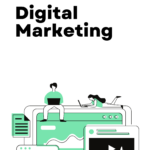Every organization needs to focus on the individual who designs and makes applications and websites to attain digital accessibility. A content creator plays a significant role in meeting accessibility standards and guidelines.
Accessibility makes digital content accessible to all, including individuals with disabilities. A content creator is in charge of creating content which is accessible to all.
Content creators write and publish different types of collateral like blog posts, PDFs, videos, infographics, and social media post. They exert great influence on their audience and have to engage with those who have disabilities as well.
Content creators enhance their company’s accessibility journey carrying out website accessibility testing and other public-facing properties.
Check out simple accessibility strategies for content teams to help them create accessible content compliant with the latest standards. These strategies help companies to remain legit and gain a competitive edge over their competitors.
Accessibility strategies for your content team
In this section, we will talk about some of the accessibility strategies available for the content team.
1. Use of clear and concise language
It is recommended to content creators to write as clearly and simply as possible. Use of complicated, jargon-ridden language is of little use to visitors. It can result in visitors leaving your site early, poor understanding of products and services, and less traffic.
Always write content that is easy to understand, uses simple, plain language and devoid of technical terms.
2. Update Resources and Websites in Response to Changes in Web Technologies
When there are changes in content it will lead to accessibility issues and provide opportunities for improvement. Content creators are recommended to recognize the issue and solution by monitoring the changes which have been made.
You should consider what technologies you intend to support, and ensure that you track functionality that changes with each version. The list includes browsers, assistive technologies, authoring tools, and CMS.
3. Headings and How to Use Them
Heading is specifically the text designated as such in Hypertext Markup Language. You can have up to six levels of heading in HTML. Most content editing tools offer some sort of style menu to designate heading structure for accessibility:
- Labeling section of content
- Navigation points
- Defining the page content structure
Organize your content section using headings to let visitors know the relation between various sections. Heading level 3 offer information in support of heading level 2.
Screen reader users can navigate by jumping from one heading to other and find what they are looking for.
4. Headings as Section Labels
You need to make certain that the heading will define each section while being descriptive. The user will get the context about the information in each section.
If the heading label is not followed by supporting content, then it probably should not be a heading. Some of the things that don’t need to be headings are block queries, taglines, or single items of information.
Additionally, it requires content creators to respect the heading hierarchy. This indicates that there must include an order to heading levels and also make sure to avoid skipping levels.
5. Videos must include “ABC”
Content creators need to make video digitally accessible by following the term” ABC” i.e. Always Be Captioning. Apart from being an effective accessibility practice, it is also considered to be an effective marketing practice. People stop to watch videos on social media if it has captions.
It will be a good idea for the content creator to offer the transcript of your audio and video content. Additionally, several captioning services incorporate transcript files and captions, so it would not cost anything additional. A transcript is helpful for individual who doesn’t use audio or video content.
6. Content creators must avoid abbreviations
Screen readers cannot expand abbreviations and spell them out as separate letters, causing confusion to the listener.
Assistive technology does not support abbreviation, so you are better off writing out the expansion.
7. Maintenance
Another strategy recommended is to regularly review the website as it changes. There is a need to lower the risk of accessibility issues by incorporating accessibility checks during the publishing process. You need to offer a template for reporting and a consistent method of evaluation.
You have to assess the progress you are making towards web accessibility for your company.
- Accessible web content
- Knowledge and training for working staff
- Understanding and implementing the workplace culture
- Benefits of adopting the Accessibility strategies
Closing Thoughts
Web accessibility is a part of creating accessible digital products that comply with the latest accessibility guidelines. Every individual deserves the equal right to access digital content or website regardless of their ability. They also need to be aware of simple ways to make their websites more accessible.
Content creators can follow the above strategies to make their organization becomes compliant with accessibility standards and guidelines. They are the stewards of their organization and are accountable for the public’s perception.









